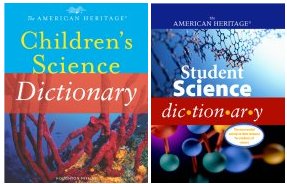Ringing Saturn Additional Information
You can learn more about the Cassini spacecraft and its mission to Saturn at saturn.jpl.nasa.gov/home/index.cfm (NASA Jet Propulsion Laboratory).
For information about the Huygens probe and Saturn’s moon Titan, go to www.ssd.rl.ac.uk/news/cassini/default.htm (Rutherford Appleton Laboratory).
Additional information about the Cassini mission is available at www.windows.ucar.edu/tour/link=/missions/cassini.html (University Corporation for Atmospheric Research).
Sohn, Emily. 2004. Planets on the edge. Science News for Kids (April 7). Available at http://www.sciencenewsforkids.org/2004/04/planets-on-the-edge-2/.
______. 2004. Destination Mars. Science News for Kids (March 17). Available at http://www.sciencenewsforkids.org/2004/03/destination-mars-2/.
Books recommended by SearchIt!Science:
 |
The Great Voyager Adventure: A Guided Tour Through the Solar System — Alan Harris
Published by Simon & Schuster, 1990.
Wind can blow 900 miles per hour on Saturn, and Jupiter is surrounded by radiation strong enough to kill a person in just a few hours. These discoveries were made from information sent back to Earth by the satellites called Voyager 1 and Voyager 2. Information from these satellites also led to the discovery of 10 new moons around Uranus. This book also describes plans for future space exploration missions and presents facts about Saturn, Neptune, Jupiter, and Uranus. |
 |
Planets, Moons and Meteors — John R. Gustafson
Published by Simon & Schuster, 1992.
The solar system is like Earth’s big backyard. In it are all the planets that are our neighbors—Mercury, Venus, Mars, Jupiter, Saturn, Uranus, Neptune, and Pluto. And at its center is the huge star that is our sun. But the solar system is also filled with asteroids, meteoroids, and comets. And most of the planets are orbited by their own moon or moons. With color photographs and illustrations and black-and-white diagrams, this book invites you to investigate our solar system. Special “Try This” sections suggest hands-on activities to personalize this vast universe. For example, “if you were to put a basketball representing the sun at home plate, you would put a poppy seed for Mercury, the closest planet, about halfway to the pitcher’s mound. The tomato seed for Venus would be just in front of the pitcher’s mound. . . .” There are tips for stargazing with the naked eye and with the help of telescopes. |
Power Words
amino acid A type of chemical compound that proteins are made of. Amino acids are made up mostly of carbon, oxygen, hydrogen, and nitrogen. Some amino acids are made by the body’s cells, but others can only be obtained from food.
methane A gas that burns easily and is the most important chemical compound in natural gas. Methane is produced by the decay of plants and animals. It is the simplest of the chemical compounds known as hydrocarbons.
protein A molecule that is made up of long chains of chemical compounds called amino acids. Living cells are made up largely of proteins. Proteins are an important part of the diet of many animals and are found in foods like meat, cheese, and beans.
Copyright © 2002, 2003 Houghton-Mifflin Company. All rights reserved. Used with permission.
